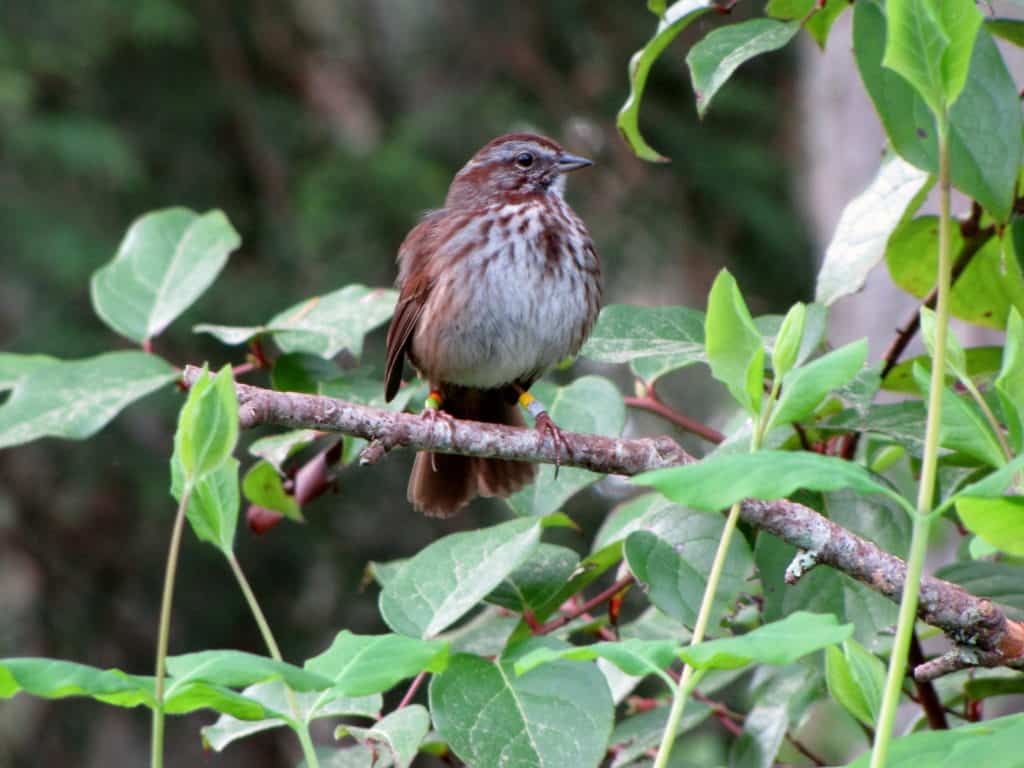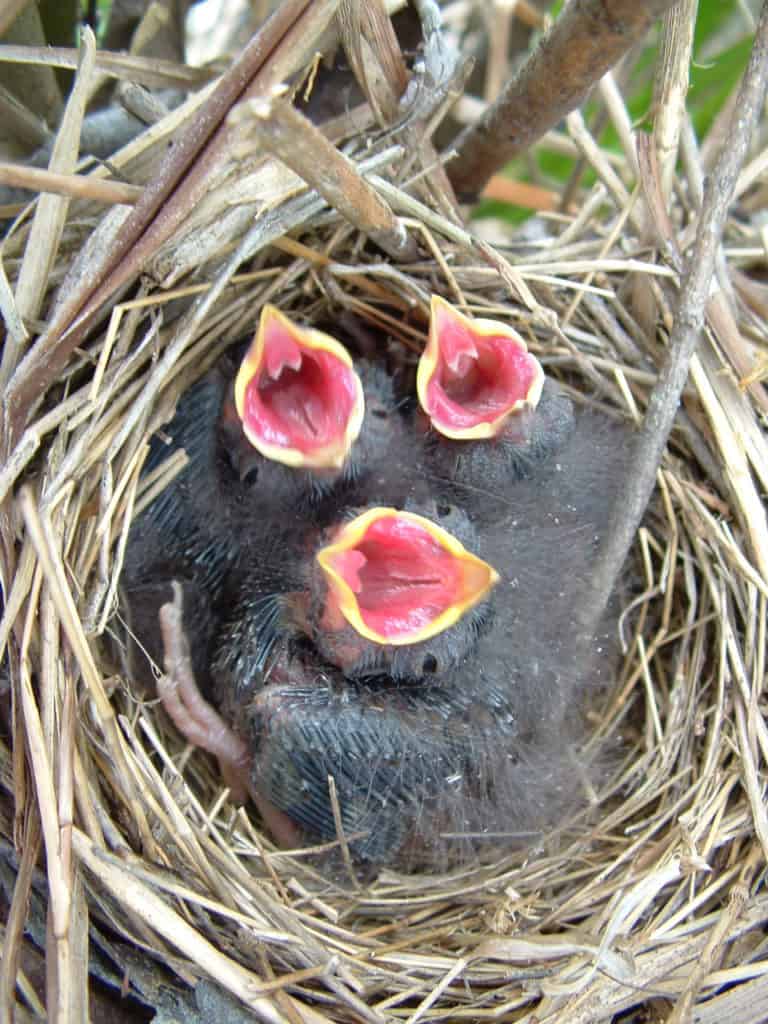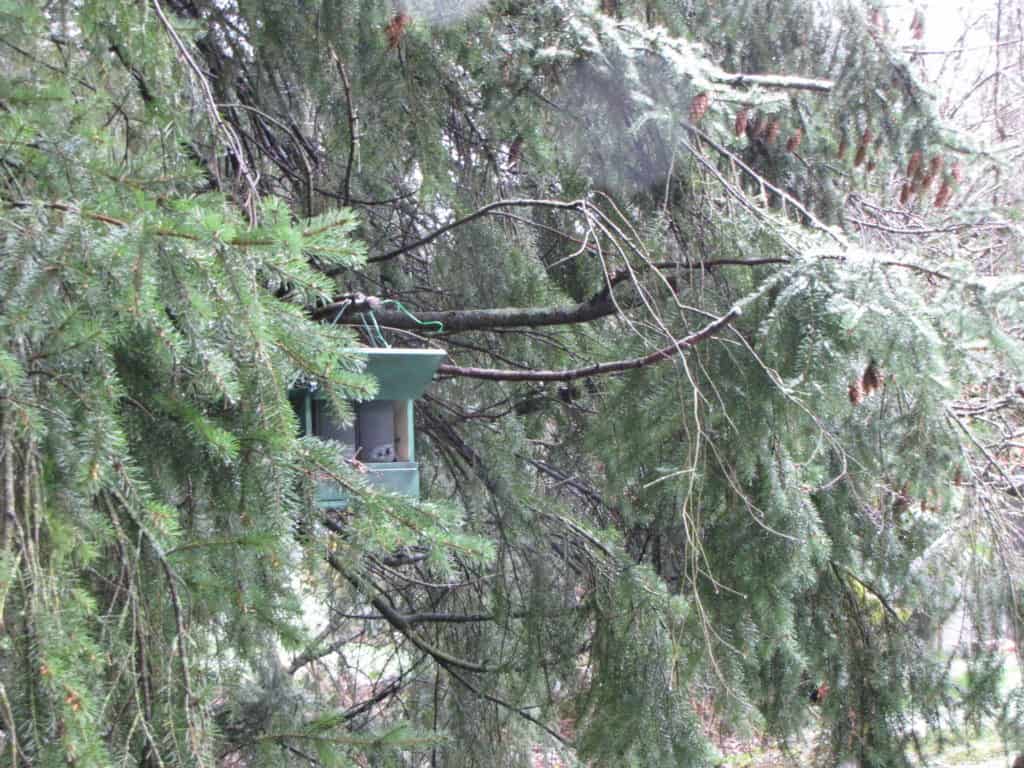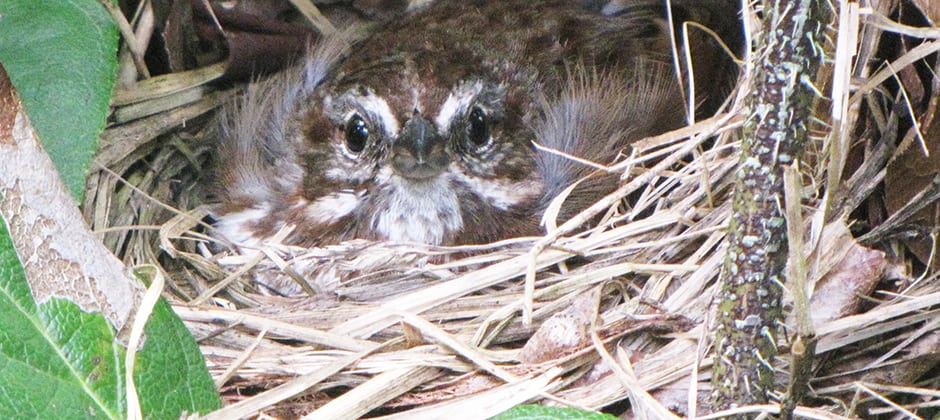Share this article
Fearful prey take fewer risks for their young
Typically, the more predators are on the landscape, the less prey are around. Bring in more wolves (Canis lupus), and you can expect elk (Cervus canadensis) numbers to fall.
“It makes total sense,” said Liana Zanette, a professor of wildlife ecology in Western University in Ontario.
But sometimes, Zanette found, just the fear of predators can cause prey numbers to decline.

A banded song sparrow on the lookout for predators. Credit: M.C. Allen
For about 20 years, she and her colleagues have been studying birds in British Columbia. In the Gulf Islands, they had little predation, but the city of Victoria has plenty of domestic cats and small mammals that prey on birds. But the numbers didn’t seem to be adding up. Sure, more predators meant fewer birds—but there were far fewer birds than predation could account for. She wondered, could the predators be causing some other type of effect?
The researchers found that when they provided food for the birds, those in high-predator areas didn’t do much better in terms of producing offspring. “That suggested to us, if there are a lot of predators for animals to worry about, they will not be able to take advantage of the unlimited food supply because they’re too busy looking for predators,” she said.
Zanette thought the reason must have to do with fear. “We think this may be another role that predators play in keeping populations of prey in check,” she said.

Song sparrow nestlings asking their parents for food. Credit: M.C. Allen
In a study published in the Proceedings of the National Academy of Sciences, she and her colleague Michael Clinchy and their PhD student and lead author Marek Allen, set out to see if fear was the reason song sparrow (Melospiza melodia) populations were declining more in high-predation areas. In a five-year-long study using remote cameras in the Gulf Islands, they found that the sparrows’ main predators were birds like ravens (Corvus corax), crows and owls, as well as raccoons (Procyon lotor). “Raccoons love to eat bird eggs and bird nestlings,” she said.
Then, the team covered the nests with fishing nets—large enough for the parent birds to get in and out but small enough to exclude predators—and placed electric fences around the nests to keep out raccoons.
Near half the nests, they played the calls of crows and other predators during breeding season. Around the other half, they played goose honks and other nonthreatening sounds.
“One says ‘you better be afraid,’ and the other says ‘don’t worry about me,’” she said.
To ensure the birds didn’t become habituated to the sounds, they played different sounds at different times of day.

Speakers broadcasting predator sounds. Credit: M.C. Allen
The team then counted the eggs and the offspring that survived, banded them and returned year after year to see if the birds became breeders themselves. They found that the predator recordings had a lingering effect on future generations. At the nests where predator calls were played, fewer eggs hatched, hatchlings were fed less and survival fell 53%. While the other nests saw their populations grow, the populations at nests where predator sounds were played declined. Over four years, their numbers fell 50%, just because of fear.
“It explains this crazy disproportionate effect,” Zanette said.
The study shows that fear plays an important role in the ecosystem, she said, and in keeping carnivores on the landscape.
Header Image: A mother bird scans a nest for predators. Time spent watching for and hiding from predators meant less time finding resources and taking care of their young. Credit: M.C. Allen








